Professor Geoff Maitland CBE was recognised in this year’s New Years Honors List for ‘services to chemical engineering following a distinguished career where he drove connections between industry and academia’. He first joined the Department of Chemical Engineering at Imperial College London is 1974 as a Lecturer in Applied Polymer Science. In 1985 he left to take on several senior roles at Schlumberger, rejoining us in 2005 with a wealth of expertise which he has applied not only to teaching and research but the department’s strategic vision. In addition to his teaching and research responsibilities Geoff has been an active member of several departmental committees, and was pivotal in establishing the Greening Imperial initiative. He also played a crucial role in the Carbon Capture Usage and Storage (CCUS) Cost Challenge Taskforce, which produced a report for government in December 2018 setting out how CCUS can be developed at-scale in the UK.
Geoff is a very valued member of the department, and Imperial College as a whole. We took the opportunity to interview him and find out more about his early interest in chemical engineering, his career, and his thoughts on climate change.
What inspired your interest in chemical engineering?

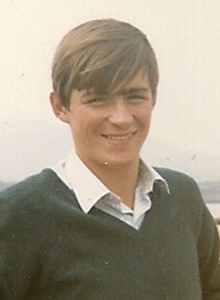
GCM: I had been interested in science from an early age and, growing up in the Potteries with a father who worked in the ceramics industry, I spent several summers working in his company’s laboratory, testing the clays and glazes used to make pottery. This was my first exposure to engineering – how science was being used to produce things that are part of everyday life and to underpin the largest industry in the area (sadly now in decay), building on the great engineers of the past such as Josiah Wedgwood. I even won a school prize for English Literature by writing an essay on a new process of vibration grinding of silica sand that I had been working on in the holidays! So the seeds were sown and even though I read Chemistry at university, my doctoral research was on how you understand and predict the properties of fluids and for my very first job I was lucky enough to be appointed to a chemical engineering lectureship in this department [at Imperial College London]. It seems chemical engineering chose me rather than the other way round. I learned chemical engineering fundamentals through teaching them, in giving lectures, taking tutorials and facilitating design projects – and of course integrating it into my research with the help of tremendous colleagues and collaborators like Bill Wakeham and Stephen Richardson.
What role has the Department played in your career?
GCM: I owe everything to the Department and a very large number of amazing students and colleagues – not just academic, though I have been lucky enough to work with some stellar internationally renowned engineers,but also through the skill of the workshops and the professionalism, dedication and initiative of the administrative and finance staff who over the years have always gone the extra mile for me. To come into the stimulating environment of the Department in the 1970s was an exciting and enabling experience for a young lecturer who wanted to make things happen by the appliance of science but did not know how. My move into chemical engineering was helped by the fact that this department has always been a broad church, embracing a multidisciplinary approach ahead of its time, giving the ideal environment to focus my research on polymer fluids and how we bridged the gap between molecular structure, bulk properties and design of both products and processes. I was also lucky that my boss at the time, Professor Anthony Pearson, had many industrial contacts, including Imperial Chemical Industries (ICI) which at the time was the UK’s biggest company (sadly now extinct, although you will still find many ex-ICI people populating the top chemicals and materials companies). I was invited by them, and encouraged by Anthony, to spend a two-year secondment at their Plastics Division working on manufacturing PVC, which seeded my interest in reaction engineering. This was a tremendous opportunity to find out how industry worked and understand what they need from university partnerships to complement their own research. This in turn became a platform for me to make a more permanent move to industry, with Schlumberger in oil and gas, some five years later.
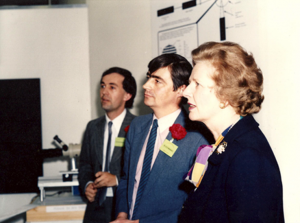
After I had been at Schlumberger for a while, I was invited by the Department to be a Visiting Professor and this enabled me to continue to keep close contact with the Department that had reared me. My roles in Schlumberger as a Programme Director then Director of Research required me to interact with relevant academic groups across the world and I was able to tap into the world-class expertise in the Department as part of that, with collaborations with the likes of Brian Briscoe, Amparo Galindo and Martin Trusler. I also had good interactions with the Centre for Process Systems Engineering (CPSE) and did some work in Schlumberger on a systems approach to real-time oil reservoir management. One of the proudest, and amusing, moments of my career was when I was invited to present this at an annual CPSE consortium meeting and Roger Sargent, for many years my Head of Department, commented that he never thought he would see the day when I would present something at a systems engineering meeting! I then knew that I had made it, in some sort of way. Then in the mid-1980s there was the opportunity to come back to the Department to do something completely different – a Monty Python moment if you like. I seized that opportunity and since then have had the time of my life working on clean energy.
Having spent so much time working in the field of gas and oil and trying to balance the use of fossils fuels without catastrophic climate change, where do you feel we are now in terms of progress?
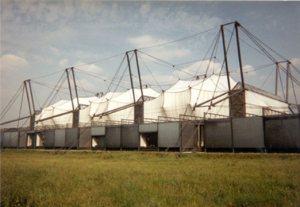
GCM: My time working in oil and gas was spent mainly trying to improve the efficiency and reduce the cost of oil and gas recovery – that is the business oilfield service companies like Schlumberger are in. But I became increasingly aware that we could not continue to produce and use hydrocarbons in the gung-ho, profligate way that we had been doing, without seriously considering the impact on climate change and having in mind an end game where CO2 emissions are negligible and the transition process to that position – how we achieve it and how we manage it. It was clear to me that with the world population growing rapidly and the demand for energy increasing because of this and the needs of developing countries, in particular, to grow their economies and the quality of life of their people, renewable energy alone was not going to meet this need for the foreseeable future. So we have to continue to use fossil fuels but find ways both to use less and to stop most of the CO2 that we generate in the process from entering the atmosphere, so that we can slow down and cap the levels there before we trigger catastrophic climate change i.e. keep mean global temperature increase to less than 2°C. Schlumberger was not the right place for me to do much about this – I had to work with a broader group of stakeholders: the energy providers, the oil and gas companies themselves, the industrial manufacturing companies whose processes generate 20% of the CO2 emissions that we need to mitigate to solve this increasingly urgent global problem. When the opportunity came to return to Imperial College to help tackle this problem, through both research into and advocacy for Carbon Capture and Storage (CCS) as a key technology, alongside renewables, nuclear, and energy efficiency measure to help avoid the worst aspects of climate change, I grabbed at the chance. My mission was to enable us to continue to use fossil fuels where we really need to, for the time being, either because there are no viable alternatives or CO2 emissions are unavoidable given current processes, but to prevent as much of the CO2 generated being released to the atmosphere, either by CCS or subsurface processing, which keeps the CO2 in the subsurface and releases to the surface only lower carbon fuels and chemical building blocks like hydrogen and syngas.
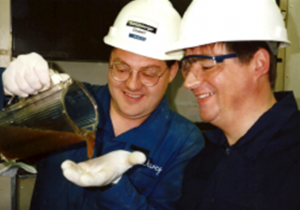
When I started seriously working on climate change mitigation and cleaner fossil fuels in the mid-2000s, CO2 atmospheric levels were around 375ppm and realistic targets if we acted quickly were to keep the concentration below 400ppm, equivalent to a mean global temperature rise based on then current models of about 2°C. To do this, the broad-brush target to achieve this was to reduce CO2 emissions globally to 80% of the pre-1990 levels by 2050. Since then, although the main OECD countries have managed to halt the rise in CO2 emissions and in some cases significantly decrease them, increased energy use and industrialisation across the world has meant that atmospheric CO2 levels have continued to rise, breaking through the 400ppm glass ceiling in May 2013. Since then there are signs that the rate of growth of atmospheric CO2 levels is slowing but the goalposts have also moved – at COP21 in Paris in 2015, 196 nations agreed to set the target at 1.5°C, an even more challenging end game. Whereas most planning scenarios for 2°C needed at least 20% of the required CO2 emission reductions to be achieved through CCS, in addition to accelerated renewables uptake, more nuclear and major improvements in energy efficiency of processes and domestic use, in order to cap the rise at 1.5°C almost all scenarios require so-called ‘negative emissions’…the removal of CO2 from the atmosphere. Whilst CO2 removal technologies based on air capture and other mechanisms are being developed, they are currently two orders of magnitude more expensive than CCS and the most viable technology to remove CO2 at the scale and rate needed is so-called Bio-Energy with CCS (BECCS) which uses biomass (formed from CO2 in the atmosphere by photosynthesis) as the fuel and then CCS to capture and store the CO2 that originally came from the atmosphere. CCS technology will be required as an enabler for this too and will be needed even more to reach the carbon mitigation targets than before. Yet we only have about 20 commercial scale plants active across the world compared with the 5000 2Mte CO2 pa plants that we will need over the next two decades to meet our targets – a huge challenge, but still possible I believe.
Has much changed in this field during your time working in it?
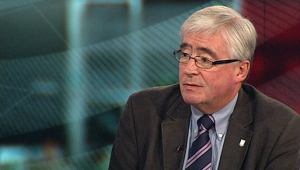
GCM: Well, renewables have grown in volume but still only represent about 20% of global energy supply; the cost of solar and wind in particular have come down dramatically due to both scale and technology improvements. There is a growing awareness of the economic benefits of energy efficiency improvement for both industrial processes and domestic use but the incentives and take up for this (e.g. smart meters) are patchy. Large scale CCS has been implemented more widely (eg in the US) where revenue can be generated by using the injected CO2 to enhance oil and gas recovery (EOR) but implementation of the technology has struggled where this option is not feasible or there is no carbon charging system to make it financially viable. However, there is a growing public awareness in many countries of the fact that time is running out to solve the climate change challenge and that this is a real problem that requires massive behavioural change at the personal, corporate and governmental levels. In the UK, a major change in 2006 was the embodiment in law of our commitment to set five-yearly carbon budgets to ensure that we meet our share of the global carbon reduction commitments required to meet the 2°/1.5°C temperature rise caps and so far we are on target to reach our 2050 goal. To achieve this in future decades we will need CCS, and I have recently been part of a Government Taskforce to recommend routes by which we can build affordable CCUS (U means ‘utilisation’ of CO2) facilities at scale in the 2020s which will lead to the capacity required in subsequent decades to help meet the 1.5°C target, alongside deploying more renewables and nuclear. This will include capture from industrial plants that generate a lot of CO2 like cement and iron and steel, which is another big change from earlier perceptions that CCUS was just to decarbonise power. By enabling this and driving resource and energy efficiency for new and existing process plant, the way is now open for chemical engineers to play a major role in decarbonising the energy and industrial sectors in the UK and worldwide.
What do you hope to see from the Government next to support the reduction of carbon emissions?
GCM: Following the acceptance of the recommendations of our CCUS Cost Challenge Taskforce report last year, I am looking to the UK Government to create the right fiscal and policy environment to make CCUS clean growth clusters, developed in close partnership with industry, a reality within the next 5-7 years, particularly by sharing some of the risks and providing incentives. I hope they will support the growth of hydrogen as a clean fuel for decarbonisation of industrial and domestic heating, and for transport. It would also accelerate decarbonisation if they were to take a lead on carbon pricing with an effective carbon tax or trading system and tax incentives for storing CO2 and decarbonising high energy intensive industrial processes. The Clean Growth Strategy provides a good template for not only achieving our own carbon budgets but demonstrating approaches that could be implemented in other countries. As part of the Industrial Strategy this gives great opportunities for re-establishing a strong manufacturing base in the UK that derives competitive advantage from decarbonised processes and products.
What made you choose to return to academia following 20 years in industry?
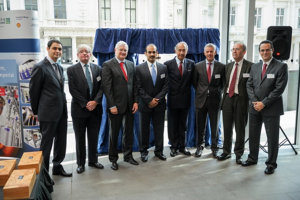
QCCSRC ran from 2008-2018.
GCM: When I joined Schlumberger in 1985, I thought that the move from academia to industry was for life. However, as I said above, in the mid-2000s I was itching to do something else and tackle directly how we decarbonise as far as possible sectors still continuing to use fossil fuels…clean fossil fuels as we have termed it. I felt I needed to work from an academic base to work with a wide range of stakeholders and I knew that Imperial was planning to start something they were calling an Energy Futures Lab to act as a portal for inter-departmental, cross-faculty multidisciplinary activity to address the key energy challenges of the 21st century. This seemed a great opportunity to work with world-class researchers from a range of disciplines, and especially to bring chemical engineers and petroleum engineers together to tackle making clean(er) fossil fuels a reality. I had worked with both types of engineer at Schlumberger and I felt we could achieve much more together than by tackling parts of the problem separately in our own bunkers. So when the opportunity arose to move back to Imperial to a Chair in Energy Engineering and be part of growing the Energy Futures Lab initiative with some Grand Challenge projects in partnership with industry, I jumped at the chance. I have to thank Professor Stephen Richardson, Head of Department at the time, for having the trust in me to tackle these issues and also my close collaborator Professor Martin Trusler for playing a crucial role in making the move happen. All my moves have been great experiences, first to Imperial as a young lecturer, then to Schlumberger into industrial R&D, but this last one back to the future has been the best of them all and I have enjoyed every minute of it.
What do you feel is your biggest career achievement?
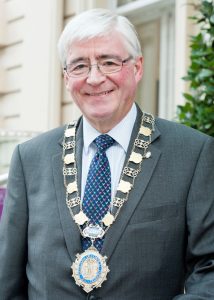
GCM: The thing I am most proud of in the research area is the creation of the Qatar Carbonates and Carbon Storage Research Centre (QCCSRC), a 10 year, $70M collaborative research programme with Shell and Qatar Petroleum focused on understanding the injection of CO2 into carbonate depleted oil and gas reservoirs or brine aquifers to optimise storage in these less understood systems, which will be particularly important for storage in regions such as the Middle East and Brazil. This was Imperial’s biggest industrial research contract and combined basic engineering research with improved methodologies for selection and design of greenhouse gas storage processes. It built on a previous five-year Shell Grand Challenge Programme on Clean Fossil Fuels to create an integrated team of 20 academics across Chemical Engineering and Earth Science and Engineering. As well as the 180 published papers, the most satisfying aspect of the programme was the development of 45 PhD students and 35 postdocs, many of whom have gone on to work with oil and gas and petrochemical majors, including 5 Qatari PhDs who have returned to their country to establish national expertise in CCS, EOR and related areas. I am pleased that the pore-scale imaging and modelling approaches that we developed in the programme have led on to our current collaboration with Shell to transform reservoir characterisation and appraisal through a methodology called ‘Digital Rocks’.
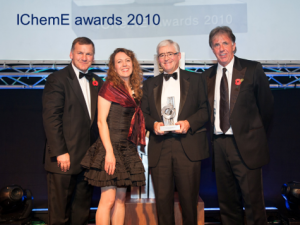
On the teaching side, I am most proud of the work I did with Professors Stephen Richardson, Dame Julia Higgins and John Perkins in the late 1970s to create a new First Year Design course, which has students designing and taking decisions on sizing process units, safety, finance and all the key elements of a realistic process design within weeks of arriving at Imperial. It is also teaches students how to work in teams – and how not to! I am pleased to say that it has stood the test of time and still operates in essentially its original form today. Putting it together with these very talented colleagues certainly taught me a lot about the design process, solving complex problems and teamwork that has stood me in good stead throughout my career.
We would like to thanks Professor Geoff Maitland CBE for all his contributions to the department and chemical engineering over the years, and look forward to working together for many more.